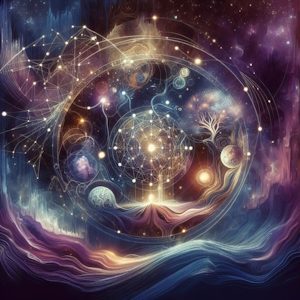The Foundations of Panpsychism
Panpsychism is a philosophical theory that posits that consciousness, or a form of mind, is a fundamental and ubiquitous aspect of reality.
Unlike materialist perspectives, which view consciousness as a byproduct of complex physical structures (like the human brain), panpsychism suggests that even the simplest forms of matter possess some degree of sentience or mental properties. This idea challenges the traditional separation between mind and matter, proposing instead that the fabric of reality itself is imbued with some form of consciousness.
The roots of panpsychism can be traced back to ancient philosophies. The pre-Socratic philosopher Thales, for example, suggested that “everything is full of gods,” hinting at a universe enlivened by spirit or consciousness. Similarly, Anaxagoras believed that nous (mind) was the organizing principle of the cosmos. These early ideas laid the groundwork for the notion that consciousness is not confined to human minds but is instead an intrinsic aspect of the universe.
In the subsequent centuries, various philosophical traditions, including those in Hinduism and Buddhism, echoed similar principles. The concept of universal consciousness or interconnectedness aligns closely with panpsychist thought, emphasizing the idea that all things—animate and inanimate—are part of a unified, sentient reality.


